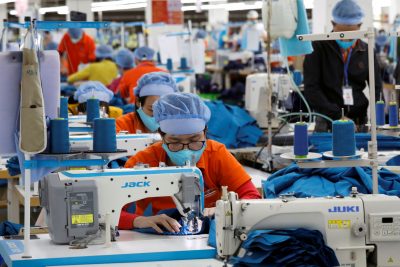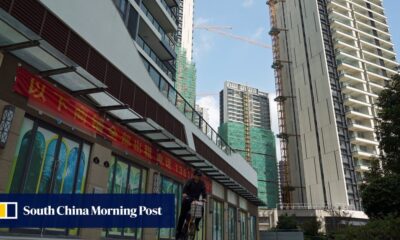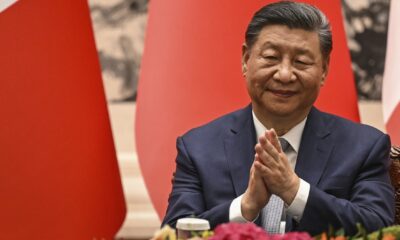Trade
Rethinking India’s economic policy towards Vietnam

Author: Kannan Reghunathan Nair, NTU and Phan Xuan Dung, Pacific Forum
Since the upgrade of bilateral relations to a ‘Comprehensive Strategic Partnership’ in 2016, India–Vietnam strategic coordination has continued to deepen — as reflected through increased defence and maritime security cooperation. But New Delhi and Hanoi’s economic ties are lagging behind, limiting their ability to address shared security and strategic concerns raised by China’s economic rise in India’s backyard and maritime assertiveness in the South China Sea.
Vietnam’s efforts to accelerate integration into the global market presents ample opportunities for India–Vietnam economic cooperation. In 2019, Vietnam signed a landmark Free Trade Agreement (FTA) and Investment Protection Agreement with the European Union. Vietnam is also a member of the Comprehensive and Progressive Agreement for Trans-Pacific Partnership (CPTPP), the signing and negotiation of which Hanoi actively facilitated. During Vietnam’s 2020 ASEAN Chairmanship, the 10 ASEAN member states inked the Regional Comprehensive Economic Partnership (RCEP) — the world’s largest trade free-trade pact.
Part of the reason why Vietnam seeks to diversify its trade and investment profile is to reduce its economic dependence on China. China is Vietnam’s biggest trading partner with import–export turnover reaching US$133 billion in 2020. Beijing is also Hanoi’s top foreign investor with total investment capital of US$2.4 billion as of November 2020. At the same time, the two countries have long been embroiled in territorial and maritime disputes in the South China Sea.
Growing anti-China sentiments fuelled by tensions in the South China Sea and the strategic implications of overdependence on China have pushed Hanoi to reach out to alternative economic partners, including India. In a recent meeting with the Indian Ambassador to Vietnam, Pranay Verma, Vietnamese President Nguyen Xuan Phuc encouraged India to welcome imports of Vietnamese agricultural products and to boost investment in Vietnam.
But Vietnam’s bilateral trade figures with India accounted for only US$11.1 billion in the 2020–21 financial year — 12 times smaller than that with China. India’s imports from Vietnam increased from US$2.5 billion in 2015–16 to US$6.1 billion in 2020–21, but the growth rate is trifling in contrast with Hanoi’s trade ties with key ASEAN countries. Conversely, Indian exports to Vietnam have not show consistent growth in the last five years, reaching only US$5 billion in 2020–21.
The magnitude of Indian investment in Vietnam falls behind that of investments from not just China but also other Asian countries like Japan, South Korea and Singapore. Protectionism is also on the rise in India, hindering the prospect of greater economic ties. India is not party to the CPTPP and withdrew from RCEP at the last minute due to concerns over its trade deficit with other RCEP countries.
Meanwhile, through its own institutions — notably the Belt and Road Initiative and the Lancang–Mekong Cooperation — Beijing has strengthened its economic presence not just in Vietnam but also in the wider Mekong region. Through these mechanisms, China consolidates its dominant position as the chief provider of economic goods for the region. This could undermine India and Vietnam’s shared strategic vision of a rules-based South China Sea. Increasingly relying on Chinese aid and investment to fuel internal development, Laos and Cambodia have been reluctant to support Vietnam’s stance on the South China Sea.
While India has taken several steps to promote economic integration with the CLMV countries (Cambodia, Laos, Myanmar and Vietnam) through projects such as the India–CLMV Business Conclave and the Mekong–Ganga Cooperation Initiative, overall economic ties remain weak. This is mainly due to the underutilisation of lines of credit and the lack of physical connectivity. To better compete with China, India needs to rethink its economic policy towards Vietnam, as well as mainland Southeast Asia.
India should begin by fast-tracking its review of the ASEAN–India FTA through multilateral dialogues, which in turn will help cover the uneven market access of Indian traders to ASEAN countries. Since its inception in 2010, the ASEAN–India FTA has shown scant results due to the failure of both parties to reduce non-tariff barriers. In 2018, the Vietnamese Ambassador to India Ton Sinh Thanh advocated for updating and reviewing the ASEAN–India FTA to deepen its economic engagement with…
Trade
Self-Reliance and Openness: Core Principles of China’s Third Plenary Session

The Third Plenum communique from the CCP indicates a prioritization of stability and compromise in response to China’s economic challenges. It highlights the concept of Chinese-style modernization and establishes political guidelines for balancing regulation and market forces.
The CCP’s Third Plenum communique signals a focus on stability and compromise in the face of China’s economic challenges. It emphasises Chinese-style modernisation and sets political directions for balancing regulation and market forces. While not as groundbreaking as previous plenums, it acknowledges the importance of market mechanisms and technological self-reliance, aiming to address issues like high youth unemployment and private sector uncertainty. The communique seeks to navigate the complexities of global competition and domestic innovation, potentially reshaping global supply chains and trade dynamics. Overall, it presents a pragmatic blueprint for China’s economic future.
Source : Self-reliance and openness central pillars of China’s Third Plenum | East Asia Forum
Trade
Trade Prevails Over Political Persuasions in China-Germany Relations

China and Germany maintain a strong bilateral relationship, rooted in economic cooperation despite ideological differences. Recent visits and agreements focus on expanding trade and addressing mutual concerns, navigating challenges while nurturing ties.
Evolving Bilateral Ties
China and Germany share a strong bilateral relationship, rooted in history since 1972. This connection has seen moments of cooperation intertwined with periods of tension. German Chancellor Olaf Scholz’s April 2024 visit underscores Germany’s commitment to fostering this partnership, reflecting a mutual interest in maintaining economic ties despite ideological differences.
Economic Pragmatism
As the second and third largest global economies, China and Germany’s economic interdependence is crucial. Germany emerged as China’s primary trading partner in 2023, with trade values reaching €254.4 billion (US$280 billion). In response to global scrutiny, Germany has taken a balanced approach, emphasizing economic stability over political discord. This was evident during Scholz’s prior visit in November 2022, where his diplomatic tone contrasted with broader EU sentiments.
Facing Challenges Together
Despite increasing public skepticism in Germany regarding China’s global influence and human rights issues, both nations continue to seek common ground. Their October 2023 Joint Statement highlights intentions to pursue cooperation in areas like carbon neutrality and open markets. To navigate these complex terrains, Germany can utilize its institutional frameworks to enhance dialogue, while also considering supply chain diversification to reduce dependency on China. The intertwining nature of their economies suggests that, despite challenges, both countries will continue to prioritize their substantial trade relations.
Source : Trade trumps political persuasions in China–Germany relations
Trade
Fixing fragmentation in the settlement of international trade disputes

Fragmentation in global trade due to the lack of development in multilateral trade rules at the WTO has led to an increase in FTAs. The Appellate Body impasse has further exacerbated fragmentation, requiring a multilateral approach for reform.
Fragmentation in Global Trade
Fragmentation in global trade is not new. With the slow development of multilateral trade rules at the World Trade Organization (WTO), governments have turned to free trade agreements (FTAs). As of 2023, almost 600 bilateral and regional trade agreements have been notified to the WTO, leading to growing fragmentation in trade rules, business activities, and international relations. But until recently, trade dispute settlements have predominantly remained within the WTO.
Challenges with WTO Dispute Settlement
The demise of the Appellate Body increased fragmentation in both the interpretation and enforcement of trade law. A small number of WTO Members created the Multi-Party Interim Appeal Arbitration Arrangement (MPIA) as a temporary solution, but in its current form, it cannot properly address fragmentation. Since its creation in 2020, the MPIA has only attracted 26 parties, and its rulings have not been consistent with previous decisions made by the Appellate Body, rendering WTO case law increasingly fragmented.
The Path Forward for Global Trade
Maintaining the integrity and predictability of the global trading system while reducing fragmentation requires restoring the WTO’s authority. At the 12th WTO Ministerial Conference in 2022, governments agreed to re-establish a functional dispute settlement system by 2024. Reaching a consensus will be difficult, and negotiations will take time. A critical mass-based, open plurilateral approach provides a viable alternative way to reform the appellate mechanism, as WTO Members are committed to reforming the dispute settlement system.
Source : Fixing fragmentation in the settlement of international trade disputes






